“East Timor is a very dangerous place. The farther you go to the east, the more you will likely be shot. There was a helicopter flying over the eastern region and it was attacked by automatic rifles from the forest below.”
I recall being a kid listening to such stories from East Timor told by one of my father’s colleagues. At school I learned that East Timor – or Timor Timur in Bahasa Indonesia – was the 27th province of Indonesia, bordering East Nusa Tenggara with West Timor belonging to the latter province.
When I was much younger I didn’t understand what was happening in that particular region, not that I didn’t watch news but more because there were no real news from that region to begin with. Under the Suharto regime practically all media outlets were censored, and those who decided to be vocal towards the government were forced to shut down.
What was taught to me at school was rather government propaganda, emphasizing the fact – concocted by the ruling regime – that it was the East Timorese, with the exception of Fretilin members, who asked Indonesia to incorporate the former Portuguese colony into the Republic.
And I believed it.
On our second day in Dili we meet Johnny, our young and energetic tour guide for exploring Baucau and Venilale. It doesn’t take long before Johnny engages us in long conversation as it is in his nature to talk to people. A son of a guerrilla fighter whose father was once captured and tortured by the Indonesian military during the occupation, Johnny tells us terrifying stories from that time, whether experienced firsthand or told by his father.
“When the Portuguese leave their colonies they don’t destroy everything,” Johnny says. Looking out to the window, he adds, “but when the Indonesians left they destroyed everything.”
Filled with optimism and great pride for his country, Johnny keeps telling us stories from the Indonesian time – as he refers to that turbulent period. As our driver – who is from Atambua, in Indonesian West Timor – drives through hilly countryside of East Timor, Johnny points his finger to a hill sparsely dotted with eucalyptus trees.
“If you see eucalyptus in Darwin, Australia, they are big. But here they are young because the Indonesians used to burn all forests as those were where the guerrilla fighters hid.”
The more we go to the east, the more Johnny tells us stories about his father and his fellow guerrilla fighters. In the past many guerrillas had code names in neither Portuguese nor Bahasa Indonesia so that the Indonesian military would never know what they meant. Names like ‘the one who killed nine enemies with one bullet’ and ‘the one who killed enemies in three trucks’ sound as though they were created based on fantasy rather than reality. But if I were a little boy I would have been amazed and inspired by those names and the stories behind them.
Upon explaining about what happened in East Timor after the Portuguese left, Johnny tells us that when the new country was engulfed in civil unrest, two political factions – UDT and Apodeti – invited Indonesia to come to mediate the conflict and help East Timor build its people’s capacity. Johnny adds that in doing so they only invited Indonesia to stay in the country for a few years until East Timor was able to properly run its civilian government.
However history proves that it was not the case.
As we drive by the town of Laleia, roughly halfway between Dili and Baucau, Johnny asks our driver to stop and park the car where a beautiful landscape of lush forests and a river stretches as far as the eye can see. “This could be somewhere in North America,” James recalls.
According to Johnny, Kairui, the location where we stop, was one of the most volatile spots in East Timor during the Indonesian time. In this area guerrillas often ambushed Indonesian military convoys every time they wanted to reach Baucau by land. Johnny points out forested hills beyond the road. “That’s where the guerrillas hid,” he says. “Whenever the guerrillas won, the Indonesians would not proceed to Baucau. Otherwise they would.”
Roughly three hours after leaving Dili we finally arrive in Baucau. The country’s second biggest city is divided into two main parts: Kota Lama (or Antiga Vila in Portuguese) where Portuguese colonial buildings are in abundance; and Kota Baru (Vilanova) where the Indonesian administration was centered. Baucau, which means “mother of rocks” in the local Fatuk Laran dialect, is situated more than 300m above sea level, making the climate slightly more comfortable than in Dili.
As a landmark of Baucau, the Pousada de Baucau’s pink Portuguese building stands elegantly overlooking the Banda Sea. Its upscale restaurant serves authentic Portuguese and fusion dishes. I go for Singa de Camarão – a Portuguese pilaf with prawns and onions; while James opts for Filetes do Mar de Baucau – a fusion dish of fried fish, mashed taro and fried banana.
However the history of Baucau is not always as appealing as our first impressions of the city. Prior to the trip to Timor-Leste I watched an eye-opening documentary by an Al Jazeera corespondent, Step Vaessen, who reported from the country during ‘Operation Scorched Earth’, launched by the Indonesian military and pro-Indonesian militia to burn and destroy many vital facilities in East Timor. It happened in 1999, the year when most Indonesians were focused on getting a grip on the country’s failing economy following the Asian Financial Crisis when the rupiah – Indonesia’s currency – fell by more than 600%, the economy shrank drastically and many banks collapsed. East Timor was unintentionally forgotten by many Indonesians at that time.
The documentary describes the movements of the last battalion of the Indonesian military who left the country by land. In doing so they burned everything they saw and killed everyone they met. The story itself and the brutal killings really brought me to tears as I had never really understood the scale of the atrocities until I saw it. Watching the documentary encouraged me to make a reconciliatory effort, albeit very minuscule, on my trip to Timor-Leste.
But this was never realized as I decided not to reveal my identity as an Indonesian to Johnny, leaving him to assume that I was also from Hong Kong, like James. Had I decided to tell him the truth, he may not have told us all those stories on the East Timorese struggle to gain independence from Indonesia.
We walk towards a big church in the center of Kota Lama where Johnny explains, “This church was built by the Indonesians, and they didn’t burn churches after the referendum.”
Like other conflicts around the globe, there are always different perspectives on what happened and why they did. Our last stop at the small town of Venilale, less than an hour’s drive south of Baucau, will complete the puzzle and give me a better comprehension of East Timor and its troubled history.
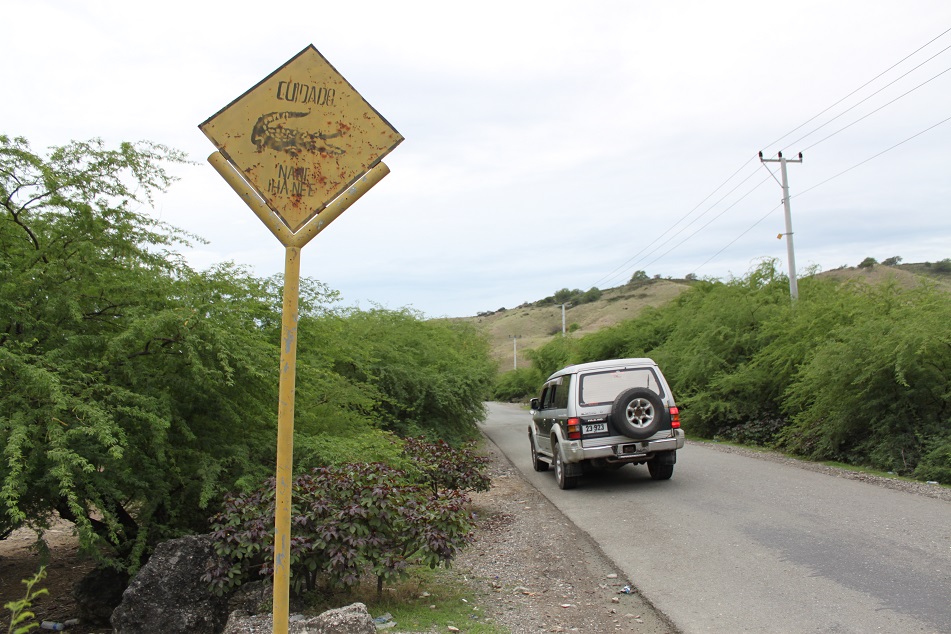
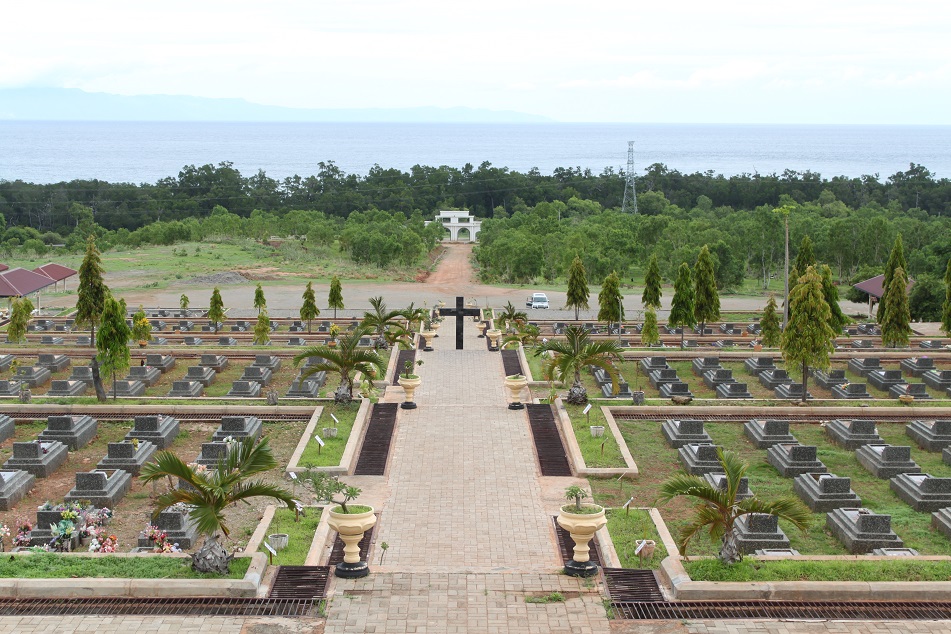
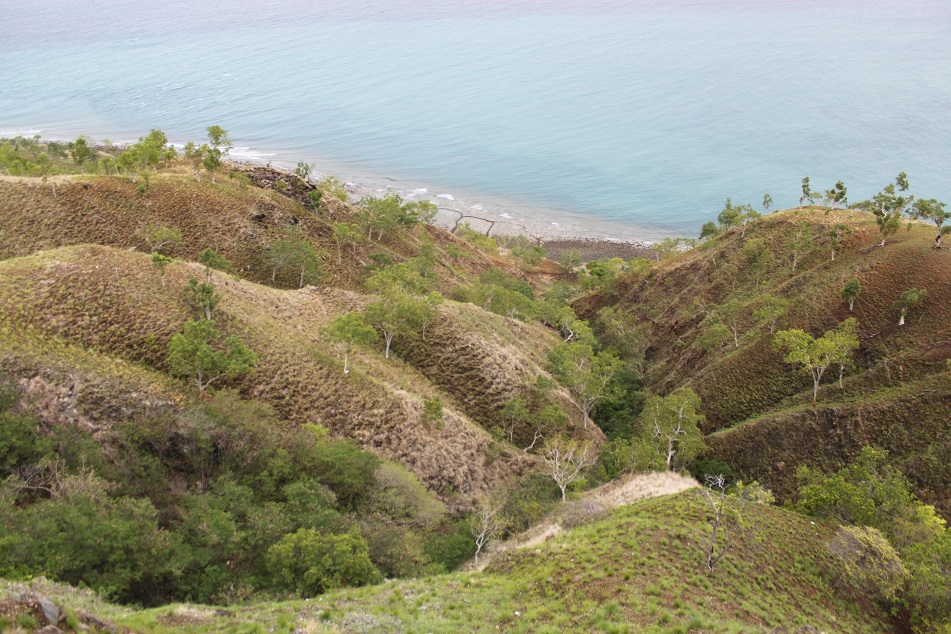
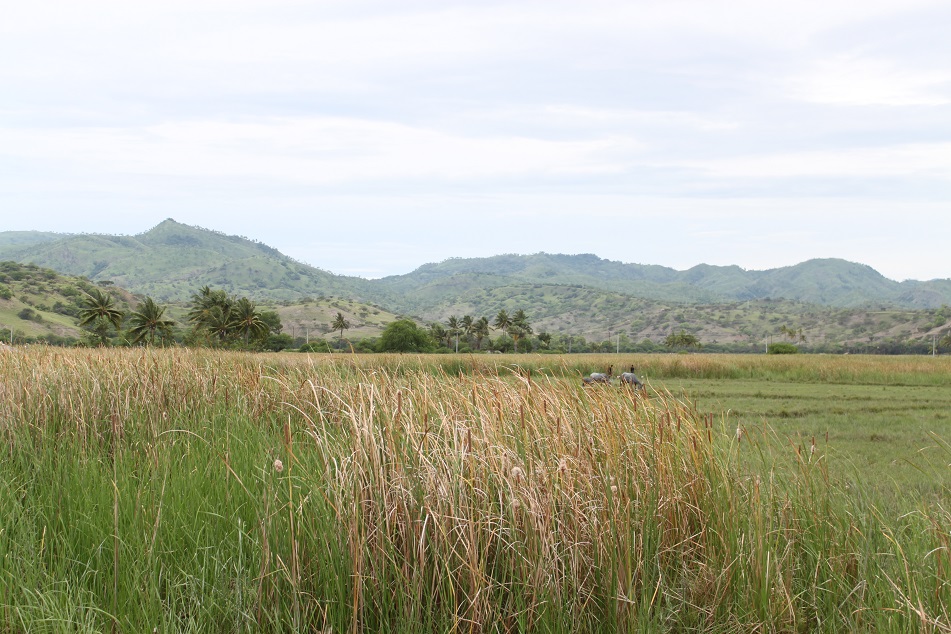
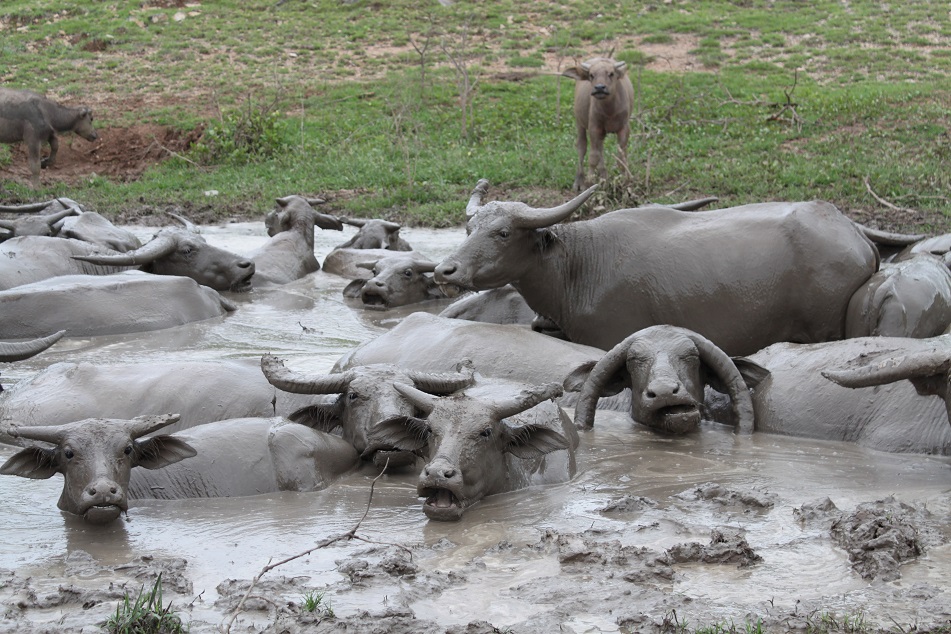
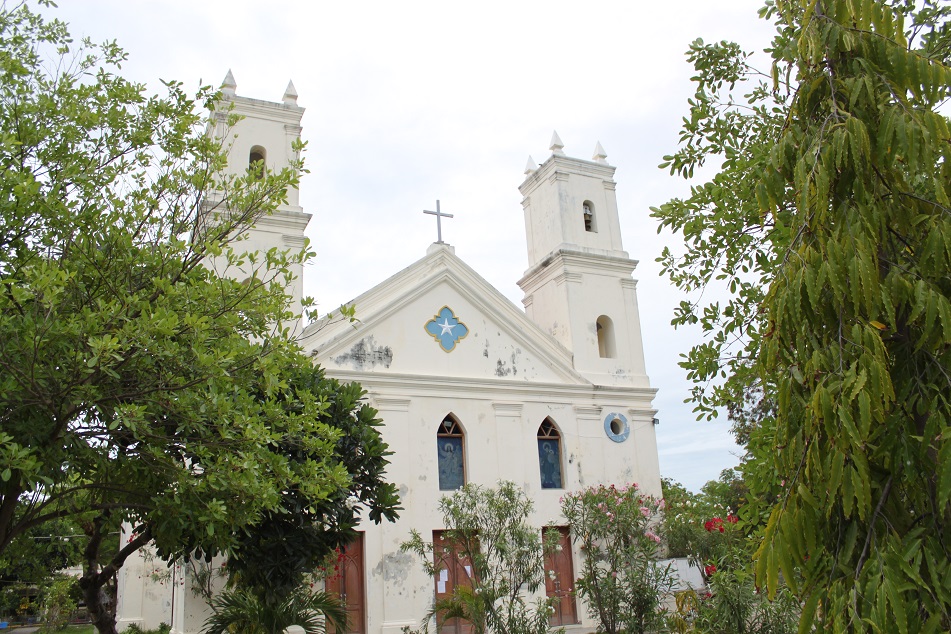
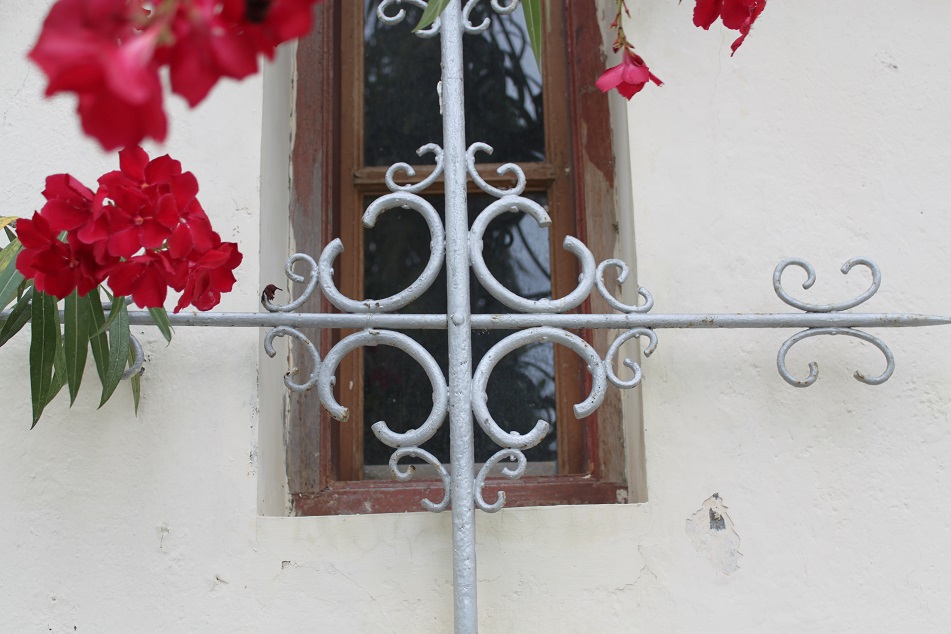
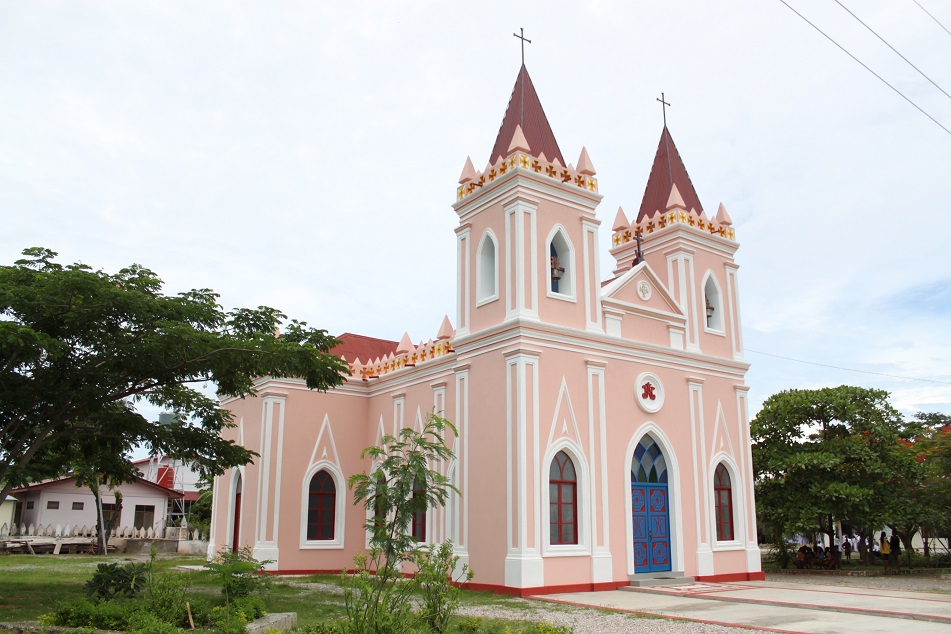
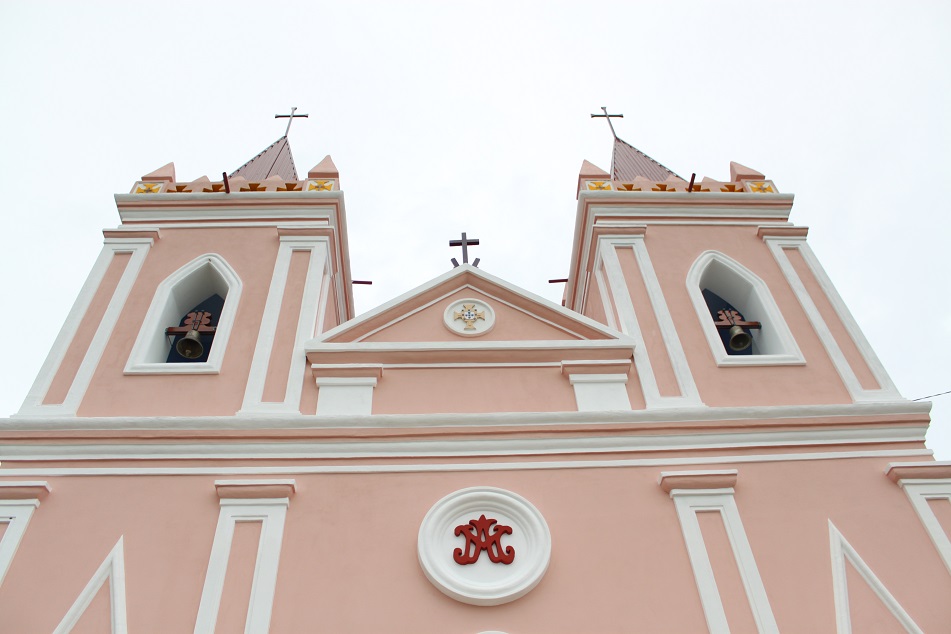
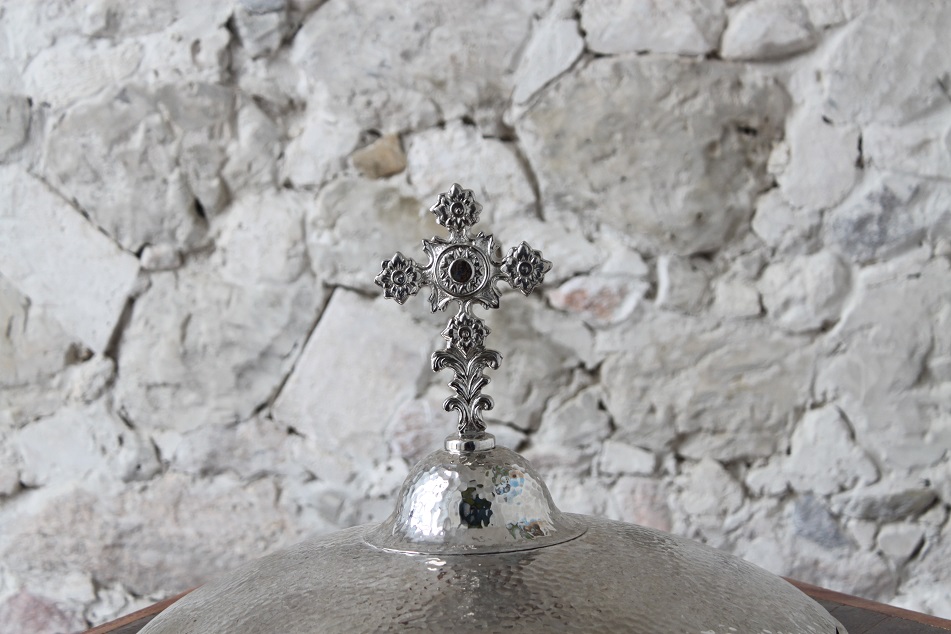
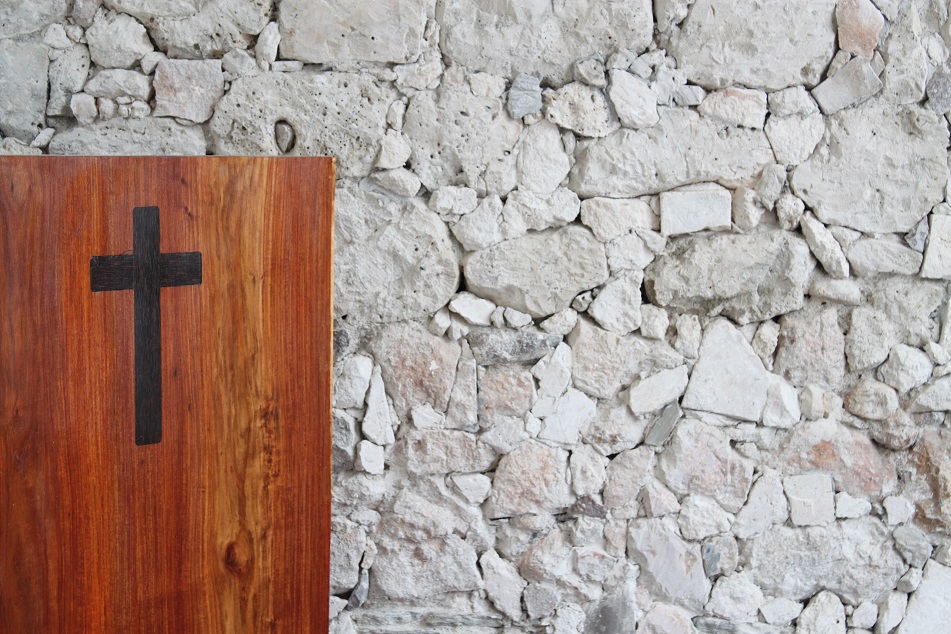
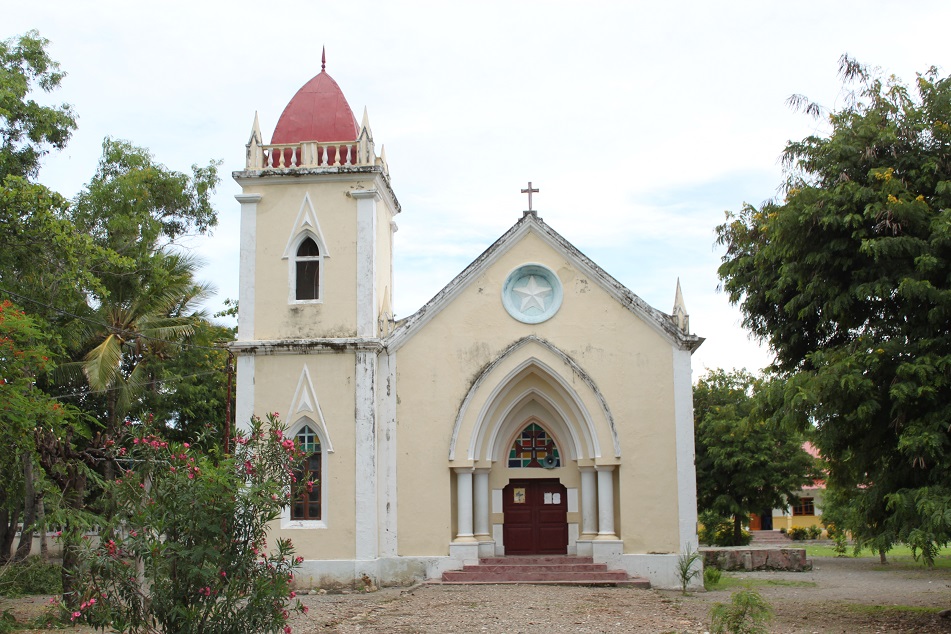
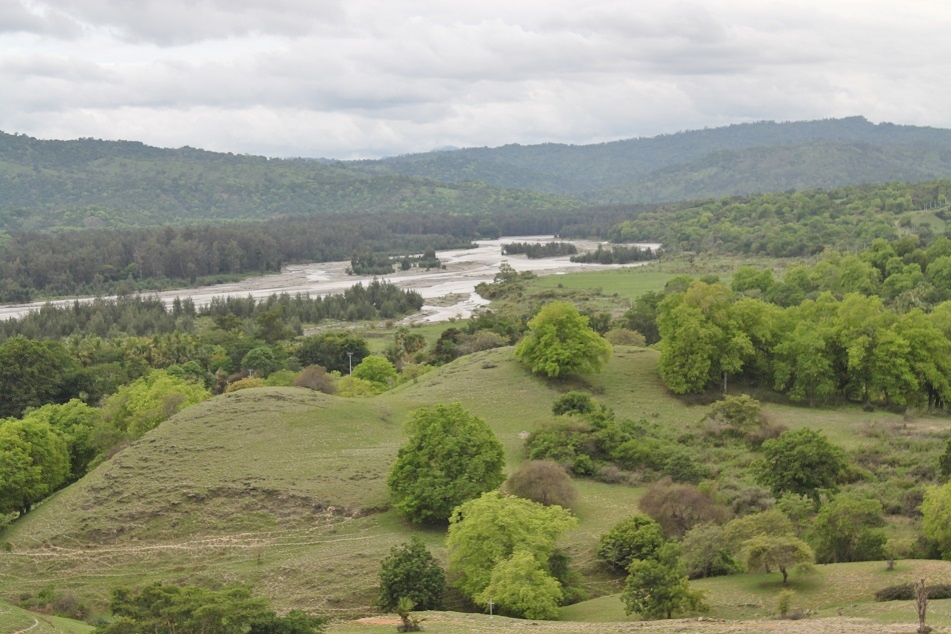
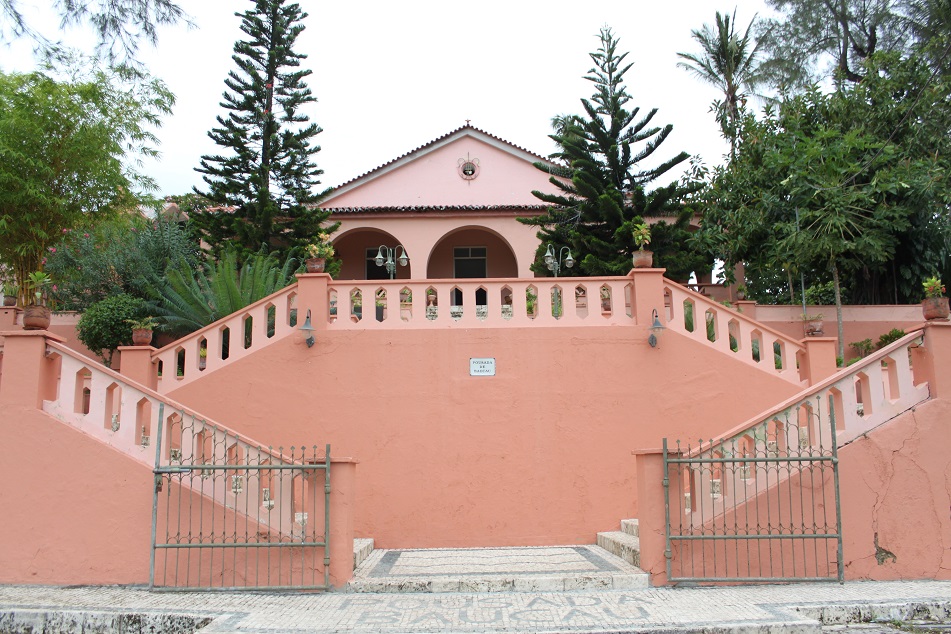
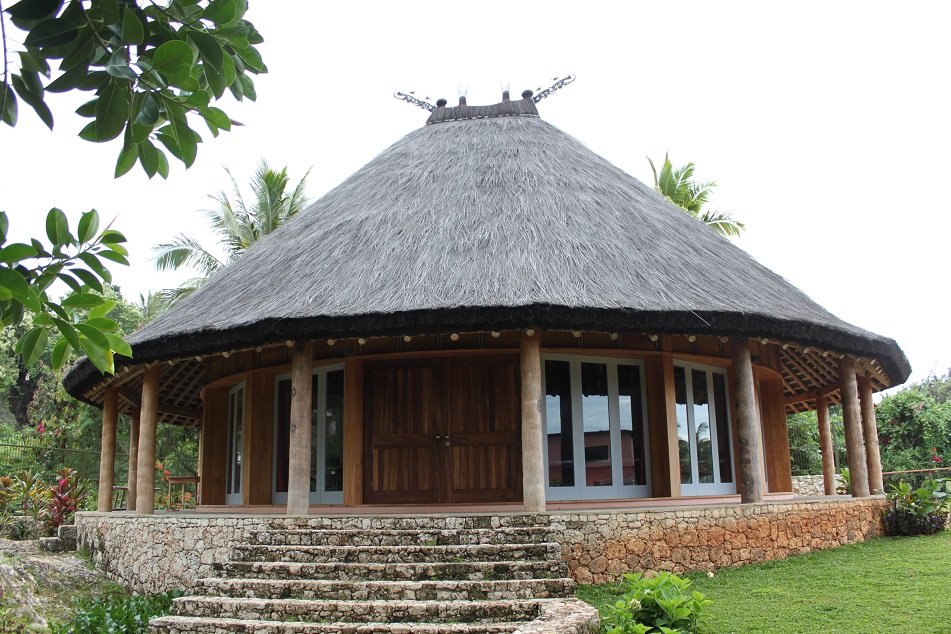
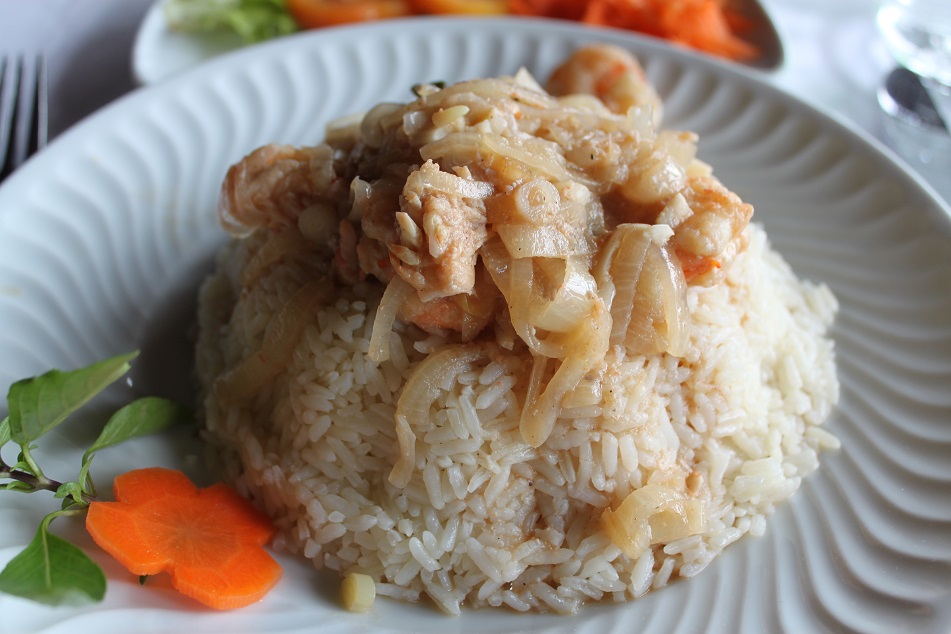

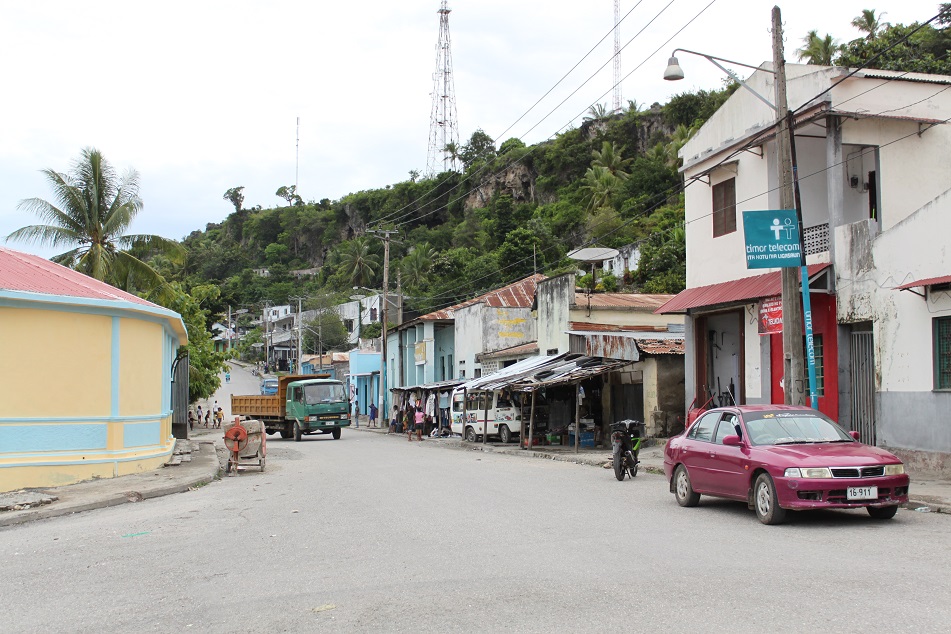
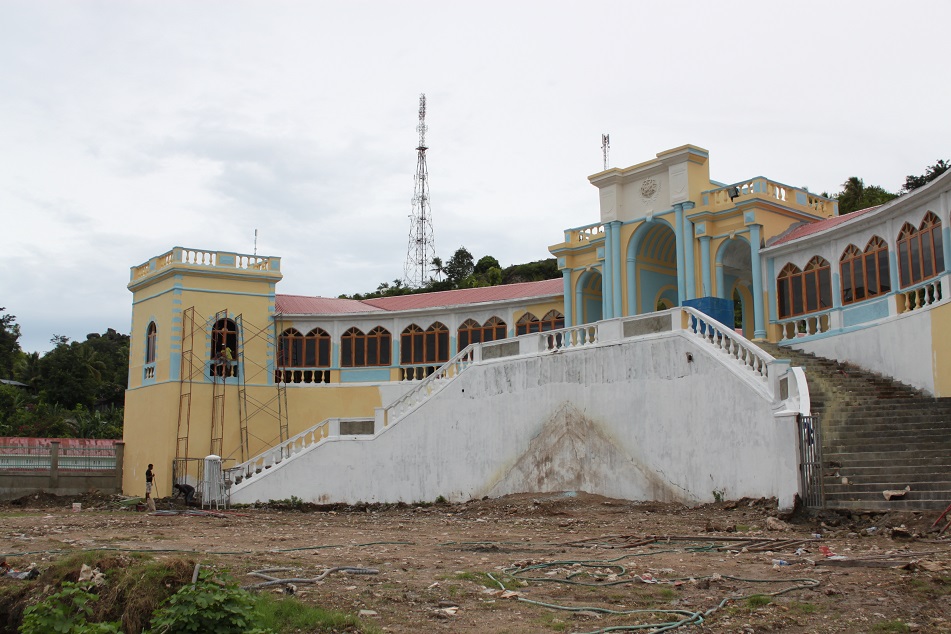
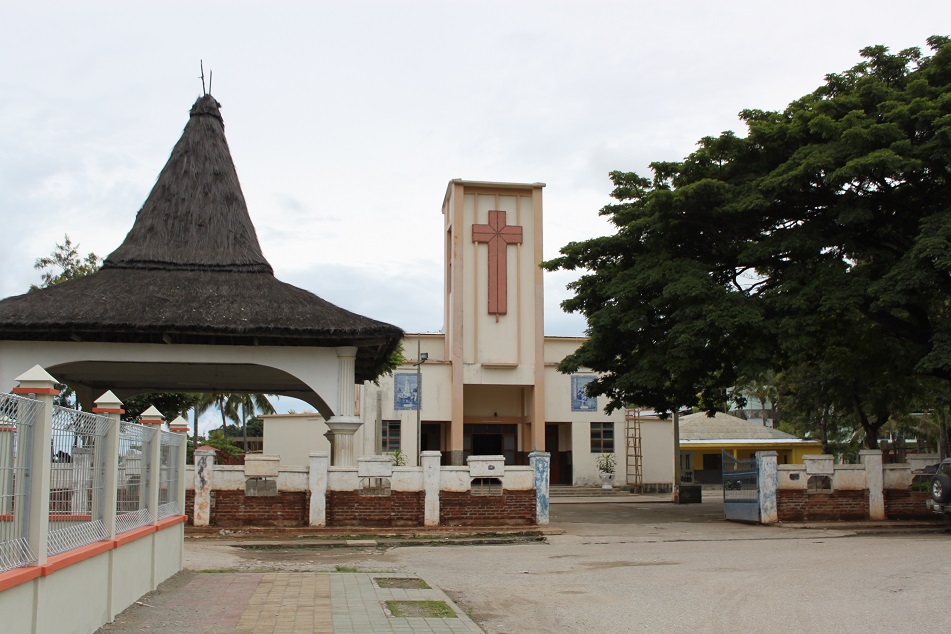
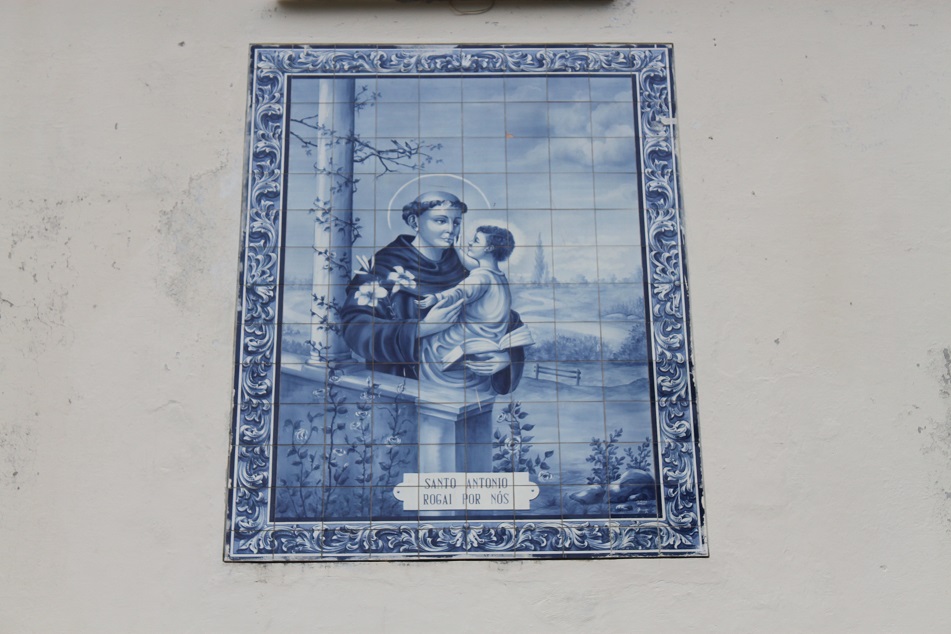
I too watched that piece by Step Vassen and thought it was excellent. I do wonder how your guide would have reacted if you had told him you were Indonesian. Did he say if they get many tourists coming from Indonesia these days? Nice post.
LikeLike
I’m glad I found that documentary just one week before departing for Dili. When we had our lunch at Baucau I almost told our guide that I’m Indonesian, but James assured me not to do that. A decision I’m glad I made. In many times, he told us rather heroic stories about the struggle for independence fought by his father, and I could tell he was a very proud son. I didn’t ask him about Indonesian tourists because I wanted to avoid any conversation topic on Indonesia, just in case I slipped my tongue and sounded so expert about the country. Thanks Lydia!
LikeLike
Nice post again on east timor, enjoyed the way you have presented starting with your memories from childhood.
LikeLike
Thanks Sreejith! My understanding of Timor-Leste grew from pieces which I collected from my childhood memories until what I read from various sources today. The trip was indeed an eye-opening journey for me.
LikeLike
That’s the real essence of travel, right?
and by sharing your experiences and photos, you made all of us in this community educated also.
LikeLike
I’m glad my posts do that. 🙂
LikeLike
I like your story, thanks for sharing. 🙂
LikeLike
Thank you and my pleasure! I wanted to give a glimpse of our neighbor, a future ASEAN member. 🙂
LikeLike
Bama, as always great update.
We did believe didn’t we? when we were a child, there so much doctrine around. I don’t even think that it was only children that believed it. Traveling does make you question a lot of things.
How did you manage to book the guide? Did James book it from HK?
LikeLike
Thank you!
That’s one of the benefits of traveling, you can get the real story from those who experienced it firsthand. However common sense and further research will always help to understand the bigger picture.
Actually we booked the tour on our second day in Dili. Our hotel manager suggested that tour company and it wasn’t bad at all.
LikeLike
I understand, that’s brilliant!
LikeLike
Thank you for sharing East Timor’s tragic story Bama. I did follow it via Time Magazine during the height of the uprising. History is always written from the point of view of the victorious and needs to be perceived with oodles of salt. We are fed such stories in our textbooks as well. I guess the one positive in countries like ours is that we still have the freedom to speak of these things openly. Great post with a wonderful gallery of images. The food shots remind me of the fantastic colonial Portuguese cuisine in Macau and Goa.
LikeLike
I believe that edition of Time was banned in Indonesia, as was other news about East Timor. Despite the ordeal we had to deal with the severe economic crisis at home, I’m glad it brought a tremendous change in Indonesia as we now have the freedom to speak up our mind, and find the truth of what really happened back then. Sadly enough this pattern of keeping political opponents/undesirable information source silent keeps repeating in many parts of the world. Thanks Madhu! I really hope I can try more Portuguese food should I go back to Macau or visit Goa one day. The ones that I had in Dili and Baucau were very tasty!
LikeLike
Bama, that day trip to Baucau (and Venilale) alone made our time in East Timor worthwhile – and to be guided by someone so closely connected to the struggle for independence… that just blew me away. It was probably a good decision that you kept quiet about your nationality, I had a feeling that Johnny would change his narrative if he realised you were Indonesian. You were in a very difficult position and I’m so glad you agreed to do this trip.
LikeLike
I couldn’t agree more, James. At one point I really wanted to tell him about my true nationality, but I’m glad you convinced me not to. That day trip to Baucau and Venilale was definitely the highlight of our trip to Timor-Leste. So many historical narratives from both sides need to be clarified without any nationalistic pretensions.
LikeLike
this trip sounds very exciting and with great history.
LikeLike
It was indeed a great trip, very different from my previous trips.
LikeLike
Thanks for this most informative story about the history of this area. It’s always a sad commentary on humanity to learn the lengths men will go to in their lust for power. Similar stories seem to repeat worldwide (certainly including the US), and unfortunately for us all I don’t think they will ever stop.
On a brighter note, the food looks quite tasty, and the landscape is beautiful! I also like the round building. The street in Baucau’s Kota Lama could easily be many parts of Central America.
LikeLike
History keeps repeating itself and the least we can do is to learn from it. If information were disseminated more fairly, probably it would have minimized the possibility of people not learning from mistakes others did in different parts of the world. However let us not lose hope. Thanks Marilyn! and yes, the Portuguese food I had was excellent, including bitoque. I wonder if you would feel like traveling to Central America if you went to Timor-Leste and the Philippines, two countries in Asia with heavy Iberian influences.
LikeLike
Bama you had me at “The farther you go to the east, the more you will likely be shot.” Thank you for this very educational post. I must say I also enjoyed your humor with the ‘spa’ photo.
LikeLike
As a kid I couldn’t forget those words, they were somehow more fascinating than terrifying for me. Thanks Sue! That mud spa treatment might be the next big thing! 🙂
LikeLike
I recognize your first photo! It’s on the highway between Dili and Manatuto just as you are arriving in Manatuto (but before the bridge). At least I think it’s the same sign. When I lived in Timor Leste I worked in Manatuto and passed that sign almost every day. There was even a crocodile there on the beach near the sign for about two straight weeks.
LikeLike
You’re right, David. That’s exactly where I took that photo. When you were in Timor-Leste did you often see crocodiles on the beach? Or was it only that one time? I have to admit that I was slightly disappointed for not seeing any crocodile there. 🙂
LikeLike
Great story from start to finish. Really enjoyed the pictures as well – especially the one of the water buffaloes!
LikeLike
Thanks Melissa! I was so close to the buffaloes when I took some picture of them. They didn’t seem disturbed at all! 🙂
LikeLike
Stunning images!
LikeLike
Thanks Simon! Glad you enjoyed them.
LikeLike
Your story sends chills to my backbone. It’s devastating to hear this story on what the Indonesians did to them. The country looks gorgeous and it actually looks familiar to Portugal.
LikeLike
Thank you for all that you have posted.
I am proud of you and also thank you when you have explored all the information I convey during our trip to Bacau-Venilale for visit 7 dug caves By the Japanese during the WWII.
Although only in 1 day trip. However, the information that has been explored is always beneficial for all those who want to explored the world in order to identify the conditions of the universe, Advantages and drawbacks of each state in the country and gave the world an analysis, and short stories based on facts that have been observed and constructive recommendations, may be useful for all us.
LikeLike
Hey Johnny!
What a nice surprise to have you here. Thank you so much for being such a fun, informative, and helpful guide during that trip. Your stories were truly invaluable for me to understand more about what happened in East Timor during the struggle for independence. All I can do in my blog is to provide more perspectives on history, but we definitely need to do more than that to ensure a better future for all of us. That was indeed a day well spent.
Thanks for visiting my blog!
LikeLike
When I first learned about what really happened, I also felt the same. Even though it was the military who did the atrocities, but as Indonesians we all have collective responsibility to build better understanding about what happened and work together with our neighbor to promote humanity and cooperation over past sentiments. Timor-Leste definitely has a great potential for tourism and if managed properly it will become an important industry which will bring jobs to the people. After that trip to Timor-Leste I’m even more curious about Portugal!
LikeLike
Great story and photos! And a bit sad for me…
LikeLike
Thanks Shella! It was not the happiest trip ever, but it was necessary.
LikeLike
Very informative post, and great pictures! I am looking forward to more of your stories from this trip. I am hoping to make it there someday, as well! 🙂
LikeLike
Thanks Ailin! There will be one more post on Timor-Leste, a wrap up post. Hopefully it will be sooner than later for you to find yourself exploring Asia’s newest country.
LikeLike
Bama,
What places in that region were your favorite? Hey Amanda!
I’m studying abroad this upcoming spring in Hong Kong!
I can’t wait to see yours unfold.
I’d really appreciate it if you’d follow my journey through Asia by following my blog too!
Best,
Chris 😀
LikeLike
Hi Chris,
Baucau was nice compared to Dili. However I’m curious with the far eastern region of the country as I assume there would be less Indonesian influence.
Enjoy your time in Hong Kong! It’s a good place to start your journey throughout Asia.
LikeLike
Reblogged this on Meus bons vícios.
LikeLike
The contradictions we accomodate in our lives. I remember vividly the conflict between indonesia and east timor and I remember feeling bingung skl because I had a deep and strong regard for indonesian people and culture and yet this was happening .I guess I feel the same way about the current west papuan situation…..and I have learned to live with the discomfort of those contradictions …..interesting reading and belum kunjung timor leste.
LikeLike
That’s also what I have been feeling lately. I love my country, but when this country does unjust actions to its own people, would that make me proud? Thanks for reading, and maybe you should pay Timor-Leste a visit. You have your Bahasa to communicate easily with people there.
LikeLike
Good story and good photos. Even I heard from a friend of mine that said Timor Leste doesn’t have many attractions site to see. But from this blog, I can say his story not 100% true.
LikeLike
Thanks Fauzi. Not that Timor-Leste doesn’t have anything interesting, in fact it’s quite the contrary. However since the country is new to tourism industry one must put more effort to find the true gems of Timor-Leste.
LikeLike
Fascinating and well written post! Living in the US, I only had vague sense of the independence movement in East Timor. You writing did a great job of filling in the gaps and giving it context.
LikeLike
Thanks! I’m glad this post gave you a better understanding of what happened back then in East Timor during the turbulent times.
LikeLike
Very useful article. I am heading to Dili by the end of this month, and was looking around the internet for first-hand information. And your blog is super useful! Thanks
LikeLike
Hi Abhi, glad this post helps you to plan ahead your trip to Dili. Tourism is still in its infancy in the country, so it’s indeed a great idea to do proper research before you go. Safe travels!
LikeLike
Hi Bama, I just found your blog and, after reading this article, will be visiting quite often! I used to go to Timor Leste twice a year for work and I am really happy to read a Indonesian traveler’s take on the history of the young country.
Cheers, Gypsytoes
LikeLike
Hi Gypsytoes,
I’m glad this blog post did that to you. Writing this series of posts on Timor-Leste was such a journey for myself as I wanted to provide a perspective many Indonesians might not even think of, or unaware of. Salam kenal!
LikeLike
This was such a beautiful and thoughtful piece – I’m so glad to have found your blog! I love that you started the post with that quote about how dangerously East Timor is viewed and then continued on to show that there is so much to be learned and appreciated despite that label. Absolutely wonderful, thank you.
-Valentine
Flux: Encountering Adulthood
http://www.fluxforum.com
LikeLike
Thank you, Valentine! Sometimes things are not what they seem. For me as an Indonesian, East Timor is so close to my mind and heart, hence the story.
LikeLike
Loved the way you wrote and organized this post…really gave meaning and insight into East Timor, both the people and history. I really wish to visit. The photos are excellent, such a great match with your writing.
LikeLike
Thanks Randall! The people were nice and the scenery was beautiful. It has so many potentials to be travelers’ paradise, yet as a new nation it faces great challenges to put things together and make them work.
LikeLike
As always, I really enjoyed reading your posts. I haven’t watched the documentaries, but I’m going to because of this post! I just happened to watch ’40 Years of Silence’ last night, and reading this just makes me sadder. I don’t hate being an Indonesian, but whenever I look back at the bloody history this country has made, sigh… It’s heartbreaking. 😥
LikeLike
Thank you, Dian! Some of our fellow countrymen did appalling things in the past. But we always have the option to improve things and create a better future. Learning history is one of the ways to prevent us from falling into the same dark hole.
LikeLike
These are some fantastic photos!! I especially love the water buffalo one 🙂
LikeLike
Thanks Emily! Our driver stopped the car when he saw the buffaloes having their time in the mud. 🙂
LikeLike
I enjoyed this well written and very interesting article! The pictures are fabulous. I look forward to reading more here, cheers!
LikeLike
Thank you! Amid Bali’s mass tourism industry, there are still such less-known places on the island to be explored.
LikeLike
That’s a very interesting post. Thank you for sharing this!
LikeLike
It’s my pleasure to share a story which has touched my heart. Thanks for reading!
LikeLike
Beautiful photos!
LikeLike
Thanks!
LikeLike
Pingback: Macau: the World’s Last Portuguese Colony | What an Amazing World!
Looks like the little calf didn’t have the priority for the mud spa. Love the composition of the photos. Food looks amazing!
LikeLike
Good observation! The food we tried in Baucau was really nice, but I wish we had more time to explore the city.
LikeLike